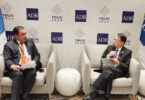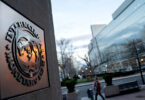F.P. Report
ISLAMABAD: The All Pakistan Business Forum (APBF) has observed that the inflation measured by the Sensitive Price Indicator (SPI) continued to rise in the wake of higher prices of food and energy despite recent cut in the prices of petroleum products, as essential commodities have still not seen a decline in prices, leaving trade and industry frustrated.
APBF President Syed Maaz Mahmood, quoting the Pakistan Bureau of Statistics (PBS), observed that the index spiked 38.28 percent when compared with the corresponding week of last year, as out of the 51 essential commodities covered by SPI, prices of 17 (33.33 percent) items increased, rates of another 17 decreased and prices of the remaining 17 items remained unchanged compared to the previous week.
On a weekly basis, the price of tomato rose 6.28 percent, egg 3.48 percent, powdered salt 2.75 percent, cooked beef 1.06 percent, garlic 1.04 percent, tea (prepared) 0.73 percent, beef 0.39 percent and potato 0.35 percent.
Among non-food commodities, the electricity charges for Q1 rose 8.59 percent, energy savers 0.55 percent, shirting 0.47 percent and liquefied petroleum gas (LPG) 0.31 percent, according to the PBS.
The year-on-year trend depicted price increases in the range of 58-137 percent among different items.
Maaz Mahmood said that Pakistan has been facing a high inflation for the past couple of years partly due to massive depreciation of the rupee against the US dollar and partly due to a surge in global commodity prices like energy cost. The country largely meets its energy demand through expensive imports.
The monthly inflation reading, measured by the Consumer Price Index, hit a four-month high at 31.4 percent in September 2023 after reaching a six-decade high at 38 percent in May.
Inflationary pressures are expected to slow down from January 2024 onwards.
The latest rupee appreciation of 10.62 percent in the past 27 working days to over three-month high at Rs287.62/$ is expected to encourage the government to make a deep cut in petroleum product prices in the upcoming fortnightly review for the second half of Dec.
However, the likely surge in gas prices under a condition of the International Monetary Fund (IMF) loan program may keep inflation elevated and not allow it to fall significantly in the near future.
He stressing the need for putting the economy on a sustainable growth trajectory by providing incentives to the industry, lamented that the economy is facing multiple challenges of falling exports, high inflation, low growth and declining foreign reserves, with fiscal accounts under immense pressure on account of heavy interest payments.
The APBF President said that the drop shows the government would find it difficult to achieve the industrial growth and export target, leading to more pressure on foreign exchange reserves of the country.
He asked the government to address the underlying structural vulnerabilities through smooth energy supply at competitive rates, as country’s overall export proceeds continued to shrink for the fifth consecutive month in a row.
Quoting the data, he pointed out 1.7 billion dollars decline in remittances during the first half of the current year compared to the same period the year before (a decline of 11.1 percent), exports declined by 6.6 billion dollars (6.8 percent decline), foreign direct investment dipped by 654 million dollars (58 percent decline), portfolio investment plummeted from negative 45.5 to negative 1032 million dollars, Public Sector Development Program decreased by 122 billion rupees (48.4 percent) and credit to private sector from 1043.1 to 703.6 million rupees which contributed to a decline in Nov 2021 Large Scale Manufacturing Sector growth of 6 percent to negative 5.50 percent in the comparable period this year.
He observed that the drop in textile and clothing exports is gaining momentum over the past five months owing to multiple factors including high energy costs, stuck-up refunds and a slump in global demands despite the massive depreciation of the rupee.
He believes that one of the main reasons behind falling exports was the exchange rate instability.
The discontinuation of duty drawbacks on local taxes and levies by the government has also created liquidity issues for the export sector.







